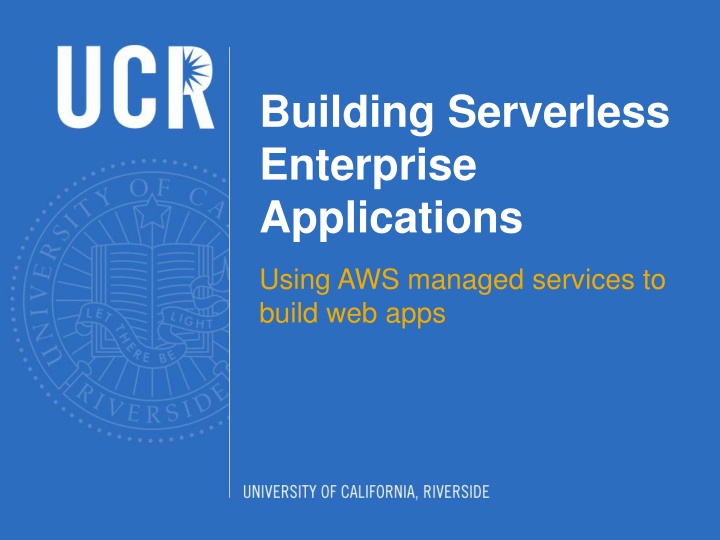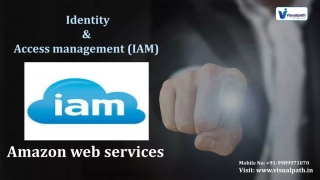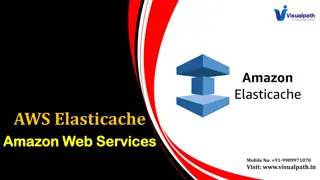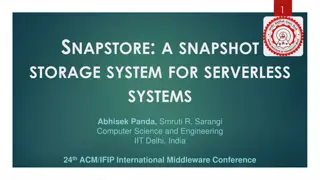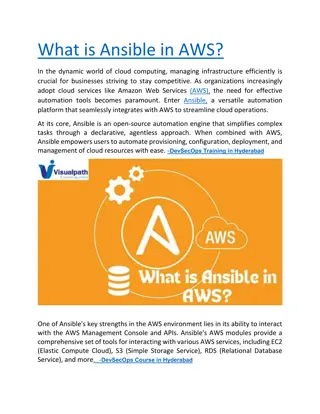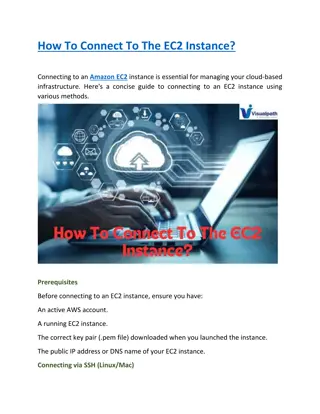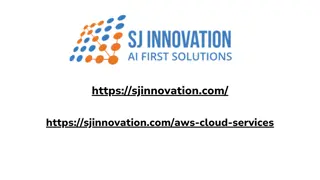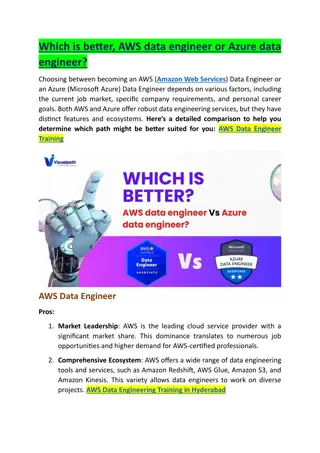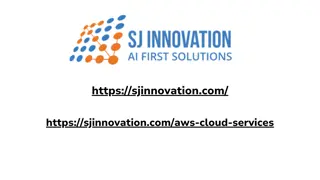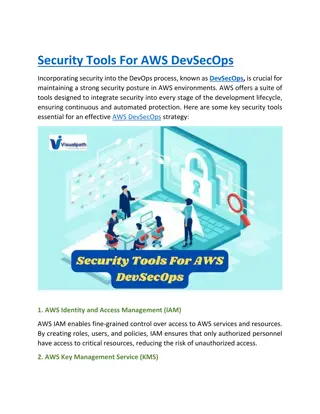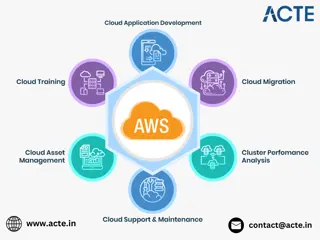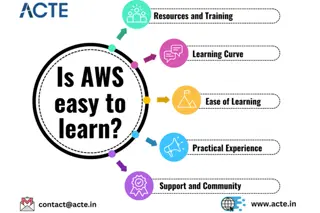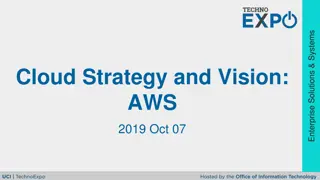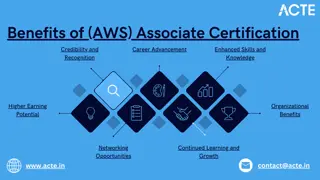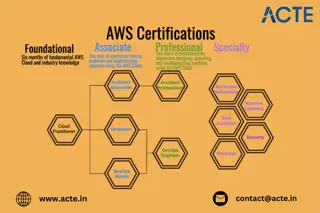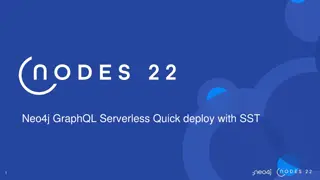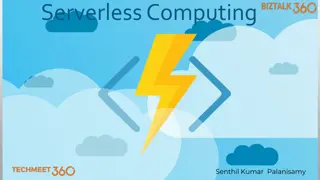Building Serverless Enterprise Applications Using AWS Managed Services
Explore how to leverage AWS managed services to develop web applications in a serverless architecture. Discover the business case for cloud adoption, different AWS application models, basic requirements for CRUD operations, and AWS architecture components like S3, Lambda, and more.
Download Presentation

Please find below an Image/Link to download the presentation.
The content on the website is provided AS IS for your information and personal use only. It may not be sold, licensed, or shared on other websites without obtaining consent from the author.If you encounter any issues during the download, it is possible that the publisher has removed the file from their server.
You are allowed to download the files provided on this website for personal or commercial use, subject to the condition that they are used lawfully. All files are the property of their respective owners.
The content on the website is provided AS IS for your information and personal use only. It may not be sold, licensed, or shared on other websites without obtaining consent from the author.
E N D
Presentation Transcript
Building Serverless Enterprise Applications Using AWS managed services to build web apps
Agenda Justification Application requirements AWS serverless architecture Frameworks and tooling Gotchas Questions
Whats the business case? Know why you are building in the cloud before you start Hint: It s probably not to save money Some ideas Improve responsiveness to customer needs Centralize and automate resource management Document and version environment Support cyclic or shifting usage patterns (match supply with demand) Develop skillsets
AWS Application Models Lift-and-shift Take existing virtual machines and move them to cloud-hosted EC2 instances (rehost) Quickest and cheapest, but fewest cloud advantages Rearchitect Rebuild application from the ground up using managed services Most time consuming and expensive, but most cloud advantages
Requirements Basic CRUD operations Create, read, update, delete Multi-user Scalable Secure (authentication and authorization) Use managed resources Align with AWS best practices
Annual Equipment Request App Used to manage the Library s annual purchase and prioritization cycle 20 users with varied roles and permissions Create, list, update, delete records Old, ready for rework Big enough to be non trivial, small enough that we had a chance of success Built with PHP (Laravel), jQuery, SQL Server
AWS Architecture Javascript (AngularJS) HTML CSS Images API Gateway S3 Lambda DynamoDB Auth0
AWS Architecture S3 Cloud document storage Hosts static web resources Can be configured to host public websites HTML, CSS, JavaScript, images Supports CNAME aliases Supports .htaccess style configuration for URL rewrite and redirect Supports SSL for custom domain names Billed for storage and for transfer
AWS Architecture API Gateway Acts as the front door to the application Handles authorization and access control Exposes Lambda functions to your front-end application code Billed for API calls
AWS Architecture Lambda Run code without servers Supports Node.js, Python, Java, C#, and Go. Can use existing libraries Upload functions, configure triggers Works closely with API gateway via proxy integration Business logic and data access code goes here Billed for compute cycles (function run time)
AWS Architecture DynamoDB Document database in the cloud Non-relational (NoSQL) Fast and scalable Built in security, backup, restore, caching Billed for storage and for transfer
Supporting Cast Auth0 CloudFormation CloudWatch Serverless.com
Serverless Framework The glue 3rdparty service A toolkit for deploying and operating serverless architectures Cloud infrastructure as code Deployment tools Environment configuration Profiles IAM Roles CloudFormation
Gotchas CORS https://serverless.com/blog/cors-api-gateway- survival-guide/ Lambda Proxy Integration response Client-side authentication AWS Custom Authorizers and Auth0 JSON Web Tokens Example code issues Framework maturity
Links and Questions https://github.com/scottmetoyer/libapps-cloud https://serverless.com/ https://auth0.com/ https://github.com/serverless/examples
